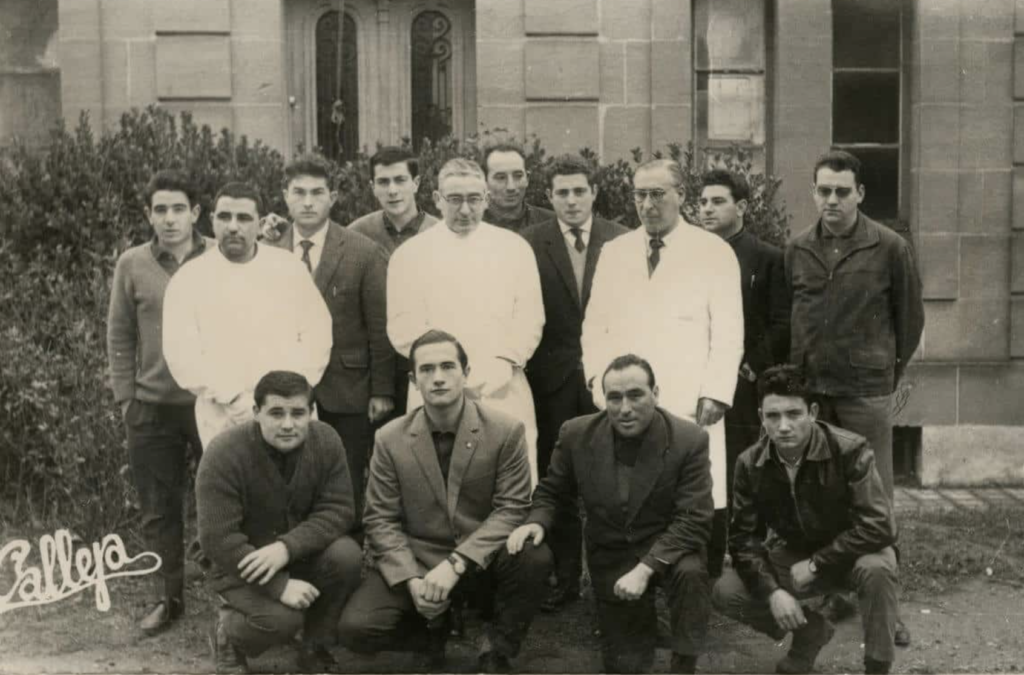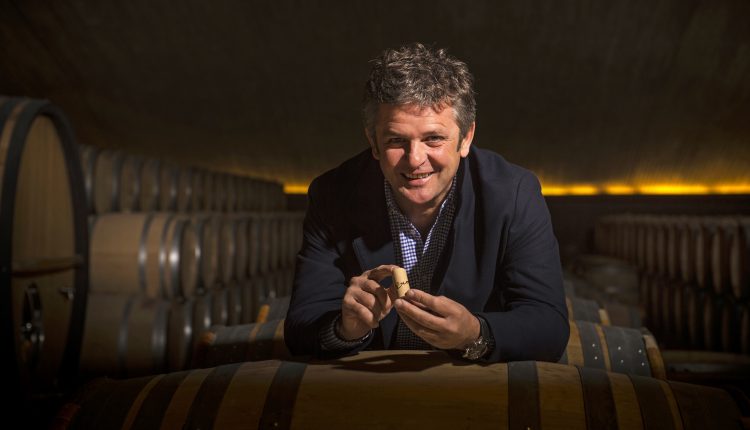Wine styles in every region evolve over time. Some say that consumer tastes drive these changes. Another argument holds that forward-thinking winemakers with their ability to create new, exciting styles are enticing consumers into trying innovative products.
Inside Rioja believes that among the hundreds of talented winemakers here, both past and present, four names stand out for their decisive contributions to the stylistic evolution of Rioja wines.
Jean Pineau and the Médoc Alavés project – a new style of winemaking
In the mid-19th century, Rioja wines were made by vinifying whole bunches of grapes in open ‘lagares’ (cement tanks). This process is known as carbonic maceration where fermentation begins inside the grapes without the presence of air. Then, as now (for example France’s Beaujolais nouveau and Rioja’s ‘cosecheros’) the wines were intensely fruity but were best consumed a short time after bottling.
An attempt to make age worthy wine following the Bordeaux method was the brainchild of Eugenio de Garagarza, the director of the Model Farm belonging to the regional government of Álava and a graduate of the agricultural school in Grignon in France. The project was aptly named “Médoc Alavés”.
In 1860 Garagarza recommended hiring a winemaker from Bordeaux to teach winemakers in Rioja Alavesa “the practices and secrets of the area of the Médoc”.The regional government of Álava would finance the operation.
The first step was to import and plant Bordeaux grape varieties.
The man hired was M. Jean Pineau, winemaker at Château Lanessan in Cussac-Fort Médoc. Pineau moved to Elciego in Álava, instructing the winery owners who participated in the project.
Pineau suggested several changes in the way Rioja wines were made, among them:
- Better vineyard husbandry (planting according to the quinconce system and better pruning).
- Vinifying with destemmed grapes.
- Fermentating in closed vats.
- Ageing in small oak barrels.
The wines were excellent, but most of the participating wineries thought that the cost was too high compared to the carbonic maceration style prevalent at the time.
Pineau’s contract was rescinded in 1868. However, one of the participants in the project, Camilo Hurtado de Amézaga, owner of Marqués de Riscal, hired Pineau, who supervised viticulture and winemaking at the winery until his death in 1889.
The wines made at Riscal were immediately popular, and were soon copied by other wineries, producing a sea change in winemaking in Rioja.

A bottle of Médoc Alavés. Photo by Tom Perry. Taken at La Granja Remelluri.
Antonio Larrea: redefining the Rioja blend and educating several generations of winemakers
Antonio Larrea, an agronomist engineer, was the head of the Haro Enological Laboratory from 1944 to 1970. Based on years of empirical evidence, Larrea believed that the ideal blend of Rioja was 75% tempranillo, 15% qraciano and 10% mazuelo. This blend considered Rioja’s varied geography, soils and climate conditions.
In addition, Larrea directed a school to educate Rioja winemakers in the science of enology. Most of these winemakers were agronomists, some agronomist engineers and others, chemists with no specific knowledge of viticulture and winemaking.
Under Larrea’s tutelage, hundreds of Rioja winemakers applied his blending formula and winemaking techniques. Today, although the fashion in Rioja is single varietals and a specific terroir, many wineries still blend grapes based on Larrea’s formula.

Antonio Larrea in the Haro Research Lab with students. Photo: Estación Enológica de Haro.
Francisco Hurtado de Amézaga and Barón de Chirel – creating an avant-garde Rioja
The style of Rioja that captivated distributors, consumers, and the media in the 1970s was a blend of tempranillo, garnacha, graciano and mazuelo from the Alta, Oriental and Alavesa. These wines showed a medium brick color, ageing in American oak barrels, with pleasant acidity and easy to drink because it was matured in Rioja wineries until ready to drink. It was made following the recommendations from Pineau a century earlier and Larrea in the 1950s.
This style was turned on its head with the arrival of Barón de Chirel, a revolutionary brand from Marqués de Riscal under the direction of Riscal’s head winemaker Francisco Hurtado de Amézaga, with the collaboration of consultants Paul Pontallier at Château Margaux and Guy Guimberteau, under whom Hurtado had studied winemaking.
The idea, according to the Marqués de Riscal website, was to make “an experimental wine which would revive the grandeur of those mythical Médoc reservas brought right up to date with the technology and resources of the 20th century”. It was to be a wine vinified only in the best vintages from old vines, between 80 and 110 years, from the tempranillo grape and vinified in Allier barrels between 18 and 24 months depending on the vintage, with no less than two years in the bottle before release from the winery.
It was revolutionary: wines from very old grapevines, a single variety – tempranillo and ageing in French oak.
The first vintage, 1986, was a huge success, spawning a new generation of Riojas, called “high expression” and “modern classics”.
This style, combining more color, aromatic intensity and oak barrels from many forests around the world, defines today’s Rioja reds.
Álvaro Palacios: a media-savvy winemaker who has popularized Rioja’s movement towards low production, terroir-driven wines
Palacios is the younger son of a winemaking family based in Alfaro in Rioja Oriental. It became clear to him that his older brother was going to take over the family business, so he struck out on his own. After a stint working for a barrel maker, he went to Priorat, a relatively unknown region where the most popular style of wine was made for use during the Catholic Mass.
Palacios joined several winemakers who began to make intensely aromatic reds from this region with hilly, slate-based soil.
He became successful in Priorat and several years later was asked by his family to head up their Rioja operations.
In Rioja, Palacios developed a family-owned vineyard on the slope of Mount Yerga, one of the highest elevations in the region. This was an innovation because the Oriental had always been known for its vineyards planted on the valley floor abutting the Ebro River.
One of Palacios’ brands, Quinón de Valmira, a 100% garnacha, was touted by Palacios, even before its release, as “a game-changer in Rioja”. Due to this media hype and the brand’s scarce availability, Palacios can command a per-bottle price of over 400 EUR.

Álvaro Palacios. Photo via Fevino.
Today, many small family wineries in Rioja apply Palacios’ philosophy of small production from a specific vineyard. These wineries are rapidly attracting the attention of the media and distributors alike, the most important gatekeepers of the wine business today.
These four winemakers represent a clear line of winemaking evolution that culminates in the wide variety of Riojas available to consumers today with a backbone that reaches back to the mid-nineteenth century.
Text by Tom Perry, Inside Rioja
Featured photo: Francisco Hurtado de Amézaga via Marqués de Riscal.
Learn more about Bilbao-Rioja Great Wine Capitals